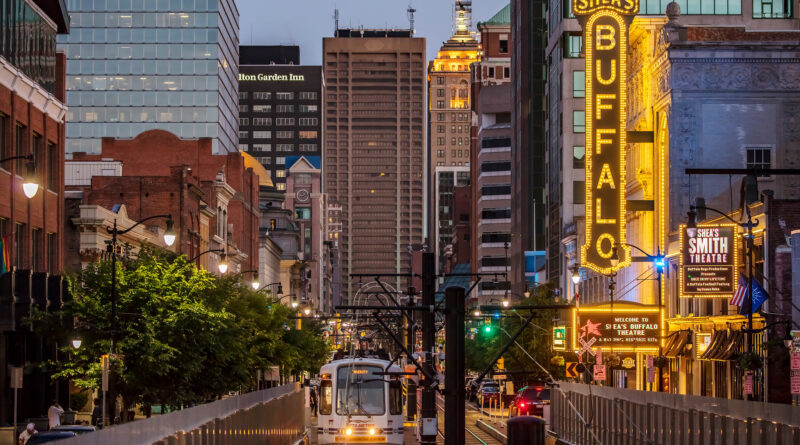History of Buffalo New York
Buffalo, New York, is a city with a rich and diverse history that has shaped its identity as a hub of culture, industry, and innovation. From its early days as a frontier settlement to its rise as a major industrial center, Buffalo has played a significant role in the development of the United States. This article explores the history of Buffalo, tracing its evolution from the 18th century to the present day.
Early Settlement and Native American Heritage
Before European settlers arrived, the area now known as Buffalo was inhabited by the Seneca Nation, part of the Haudenosaunee Confederacy (Iroquois Confederacy). The Seneca, known as the “Keepers of the Western Door,” were the westernmost of the Six Nations and played a crucial role in trade and diplomacy in the region. The land was rich in resources, with fertile soil, abundant game, and access to the Great Lakes, making it an important location for Native American communities.
The first European exploration of the area occurred in the 17th century, when French missionaries and traders began to establish contact with the Seneca people. However, it wasn’t until the late 18th century that European settlers began to establish permanent settlements in the area. The town that would become Buffalo was initially called “New Amsterdam” and was part of the larger Holland Land Purchase, a massive land deal that opened up Western New York for settlement.
The War of 1812 and the Burning of Buffalo
Buffalo’s strategic location near the Canadian border made it a focal point during the War of 1812. The city’s proximity to Lake Erie and the Niagara River made it a key military and transportation hub during the conflict between the United States and British forces.
In December 1813, British troops and their Native American allies attacked Buffalo, leading to the burning of the town. Nearly every building in Buffalo was destroyed, and the population was forced to flee. The destruction of Buffalo was a significant blow to the fledgling settlement, but it also marked a turning point in the town’s history. After the war, the residents of Buffalo quickly rebuilt, and the town began to grow rapidly as it established itself as a key port and trading post.
The Erie Canal and Buffalo’s Growth
The completion of the Erie Canal in 1825 was a transformative event for Buffalo, propelling the city into a period of rapid growth and prosperity. The canal connected the Hudson River to Lake Erie, creating a vital waterway that linked the Atlantic Ocean to the Great Lakes. Buffalo, located at the western terminus of the canal, became a major transportation hub, facilitating the movement of goods between the Midwest and the Eastern Seaboard.
The Erie Canal brought a flood of new settlers to Buffalo and stimulated the local economy. The city became a center for commerce, with warehouses, docks, and businesses springing up along the waterfront. By the mid-19th century, Buffalo had grown into one of the most important cities in the United States, with a thriving population and a diverse economy that included manufacturing, shipping, and trade.
The Rise of Industry and the Steel City
Buffalo’s industrial boom began in the late 19th century, driven by its strategic location and access to natural resources. The city’s proximity to the Great Lakes and the availability of cheap transportation via the Erie Canal and railroads made it an ideal location for manufacturing and industry.
The steel industry, in particular, became a cornerstone of Buffalo’s economy. The city was home to several large steel mills, including the Lackawanna Steel Company, which was one of the largest in the world at its peak. Buffalo also became a major producer of grain, flour, and other agricultural products, thanks to its location at the heart of America’s breadbasket.
The city’s industrial growth attracted a large workforce, leading to a population boom. Immigrants from Europe, particularly from Ireland, Italy, Poland, and Germany, flocked to Buffalo in search of work and opportunity. The influx of new residents contributed to the city’s cultural diversity and helped shape the character of Buffalo’s neighborhoods.
The Pan-American Exposition and Buffalo’s Golden Age
The turn of the 20th century was a period of great optimism and growth for Buffalo, culminating in the Pan-American Exposition of 1901. The exposition was a world’s fair that celebrated the technological and cultural achievements of the Americas. Held in Buffalo, the event attracted millions of visitors and showcased the city’s status as a modern and prosperous metropolis.
However, the exposition is also remembered for a tragic event: the assassination of President William McKinley. On September 6, 1901, McKinley was shot by anarchist Leon Czolgosz while attending the fair. The president died eight days later, and Vice President Theodore Roosevelt was sworn in as his successor in Buffalo.
Despite this dark chapter, the early 20th century was a time of prosperity for Buffalo. The city’s population continued to grow, and it became known as the “Queen City of the Lakes” due to its economic importance and cultural vibrancy. Buffalo’s architecture flourished during this period, with many of the city’s iconic buildings, such as the Electric Tower and the Buffalo City Hall, being constructed.
The Decline of Industry and the Impact of Deindustrialization
Buffalo’s fortunes began to change in the mid-20th century as the city faced the challenges of deindustrialization. The decline of the steel industry, along with competition from other regions and changes in transportation, led to a significant economic downturn. Factories closed, jobs were lost, and the city’s population began to decline.
The loss of industry had a profound impact on Buffalo’s economy and social fabric. Neighborhoods that had once thrived during the city’s industrial heyday fell into decline, and the city’s infrastructure began to deteriorate. Buffalo, like many other Rust Belt cities, struggled to adapt to the new economic realities of the post-industrial era.
Urban Renewal and the Rebirth of Buffalo
In recent decades, Buffalo has undergone a remarkable transformation, fueled by efforts to revitalize the city and reinvest in its historic assets. The city’s waterfront, once dominated by industrial activity, has been redeveloped into a vibrant public space with parks, recreational facilities, and cultural attractions.
Buffalo has also become a center for arts and culture, with a growing number of galleries, theaters, and music venues. The city’s historic architecture has been preserved and restored, attracting tourists and new residents alike. Buffalo’s resurgence has been driven by a combination of public and private investment, along with a renewed sense of civic pride and community engagement.
Today, Buffalo is experiencing a renaissance, with new businesses, restaurants, and cultural institutions contributing to the city’s revitalization. The city’s population is stabilizing, and there is a renewed sense of optimism about Buffalo’s future.
Buffalo’s Cultural Legacy and Community Spirit
Throughout its history, Buffalo has been known for its strong sense of community and cultural diversity. The city’s neighborhoods are a reflection of the various immigrant groups that have called Buffalo home, each contributing to the city’s rich cultural tapestry. This diversity is celebrated through festivals, events, and institutions that highlight the contributions of different ethnic groups to Buffalo’s history and culture.
Buffalo’s sports teams, particularly the Buffalo Bills and the Buffalo Sabres, have also played a significant role in fostering a sense of community and pride among residents. Despite the challenges the city has faced, Buffalo’s residents have remained resilient and committed to the city’s future.
Discover more from City Towner
Subscribe to get the latest posts sent to your email.




